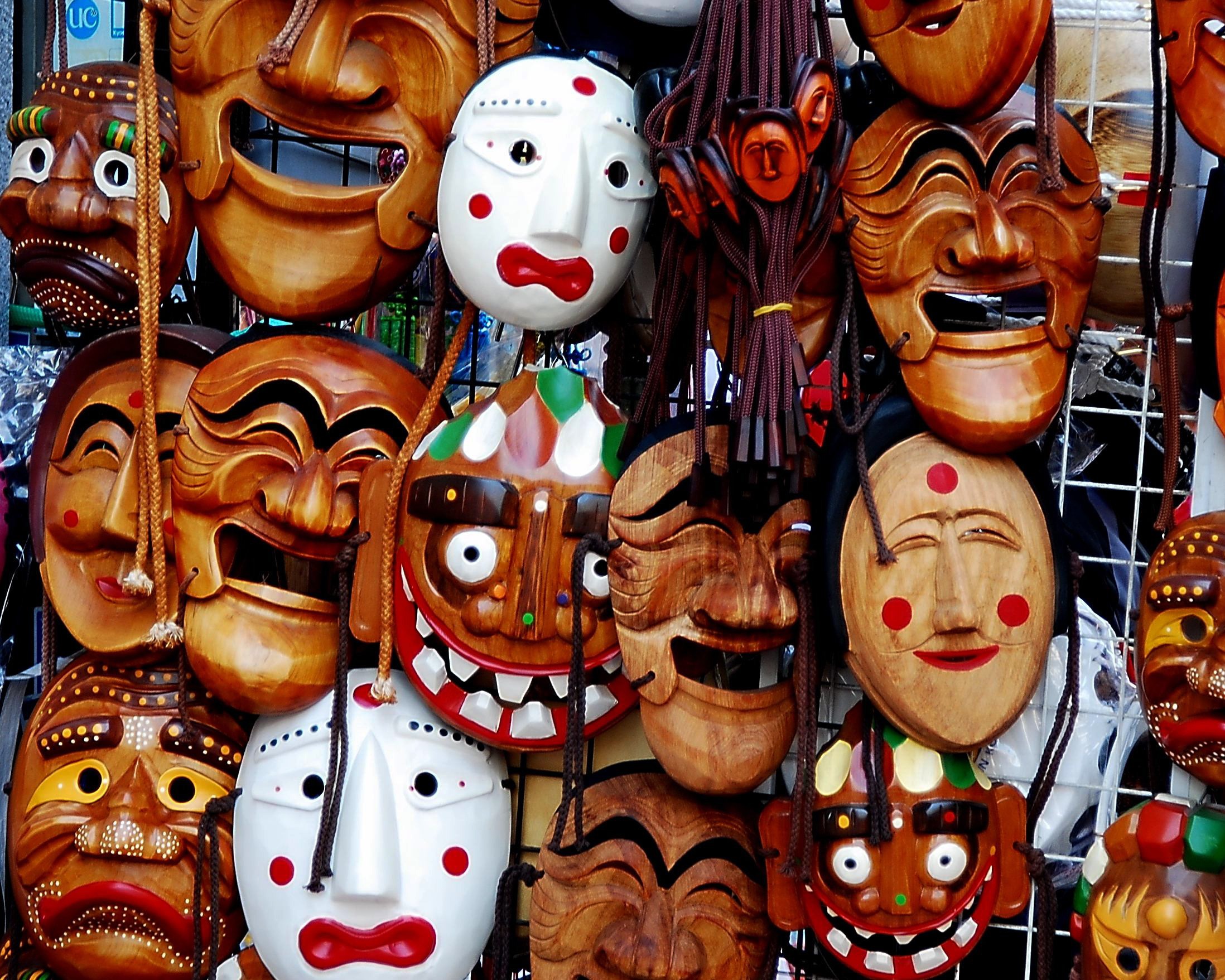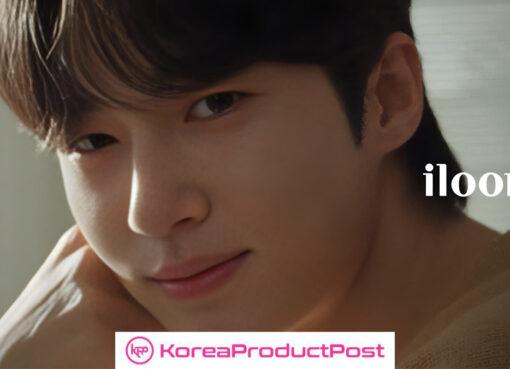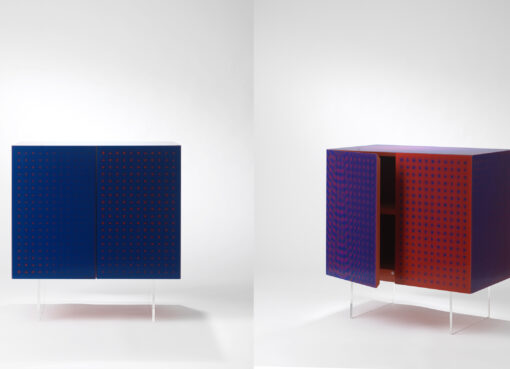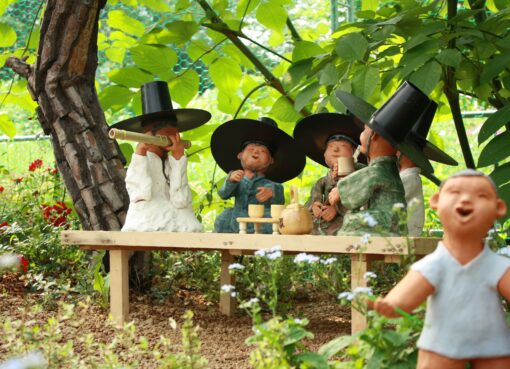Korean Hahoe masks are a long-standing cultural tradition. They are national treasures and treated as worldwide masterpieces of mask art. Hahoe masks (Hahoe Tal) were originally comprised of 12 masks, but now only 9 are remaining and are designated as Cultural Treasure of Korea, and the other three are lost. They were created in the mid-Goryeo Dynasty era by craftsman Huh Chongkak. It is not clear how and why they originated, but according to one myth, he was ordered to create 12 masks having no contact with people. While making the last mask, a girl peeked into his workshop, and the craftsman immediately suffered a stroke and died. The final mask, ‘The Fool,’ was left incomplete without a lower jaw.
More commonly, these masks are used in Korean dramas and dance, Hahoe Tal Chum (Hahoe Mask Dance Drama). It is one of the traditional folk plays of Korea. It includes the 9 remaining masks as allegorical characters – Yangban (the arrogant aristocrat), Kaksi (the bride), Chung (the Buddhist monk), Choraengi (Yangban’s clownish servant), Sonbi (the pedantic scholar), Bune (the concubine), Imae (the jawless foolish servant), Baekjung (the murderous butcher), and Halmi (the older woman). The three missing masks are Chongkak (the bachelor), Byulchae (the tax collector), and Toktari (the older man).
The Hahoe masks are uniquely crafted, and you can use them as a wall decoration to make your walls look more interesting. Some masks have a separate jaw, mimicking a real jaw that opens when the mask is moved. You can find the masks easily on Amazon.
Yangban Mask (the arrogant aristocrat)
This is the typical mask and is a masterpiece of Hahoe art. The face is a representation of a mix of bluff and composure. It represents a Korean smile and hospitality. The movable jaw can represent both smile and anger, depending on the jaw position.

Kaksi Mask (the bride)
It is the bride mask representing a beautiful woman. The carving of the eyes reflects sorrow because of the loss of her love. The mask has firm-set lips representing hardships in life.

Imae Mask (the jawless foolish servant)
This is the incomplete mask that the artist didn’t finish. It is the mask of a foolish servant who served a nobleman. The face shows a twisted nose and drooping eyes.

Bune Mask (the concubine)
The mask shows a concubine of either Yangban, the aristocrat, or Sonbi, the scholar. The mask has a tiny fixed mouth, smiling eyes, and apple cheeks – all representing beauty and good humor.

Seonbi Mask (the pedantic scholar)
The scholar mask represents a disgruntled face, and it shows he cannot be adapted to vulgar social structure. It is a representation of a scholar’s dignity and arrogance. The shape is triangular, with a wider head reflecting a smart brain.

Read more interesting articles from KoreaProductPost:
- O-House – Redefining South Korea’s Interior Home Decor
- Korean Decorative Folding Fans from Amazon for Home Decor
- Top 5 Korean Home Décor Gift Ideas from Amazon – Cute Figurines
- Top 5 Traditional Korean Furniture on Amazon to Spruce Up Your Home Interiors
- Korean Pottery Decorations for Your Home
Our editors independently select all products featured on KoreaProductPost. However, we may earn an affiliate commission when you buy something through our retail links. And as Amazon Associate we earn from qualifying purchases.










Comment here